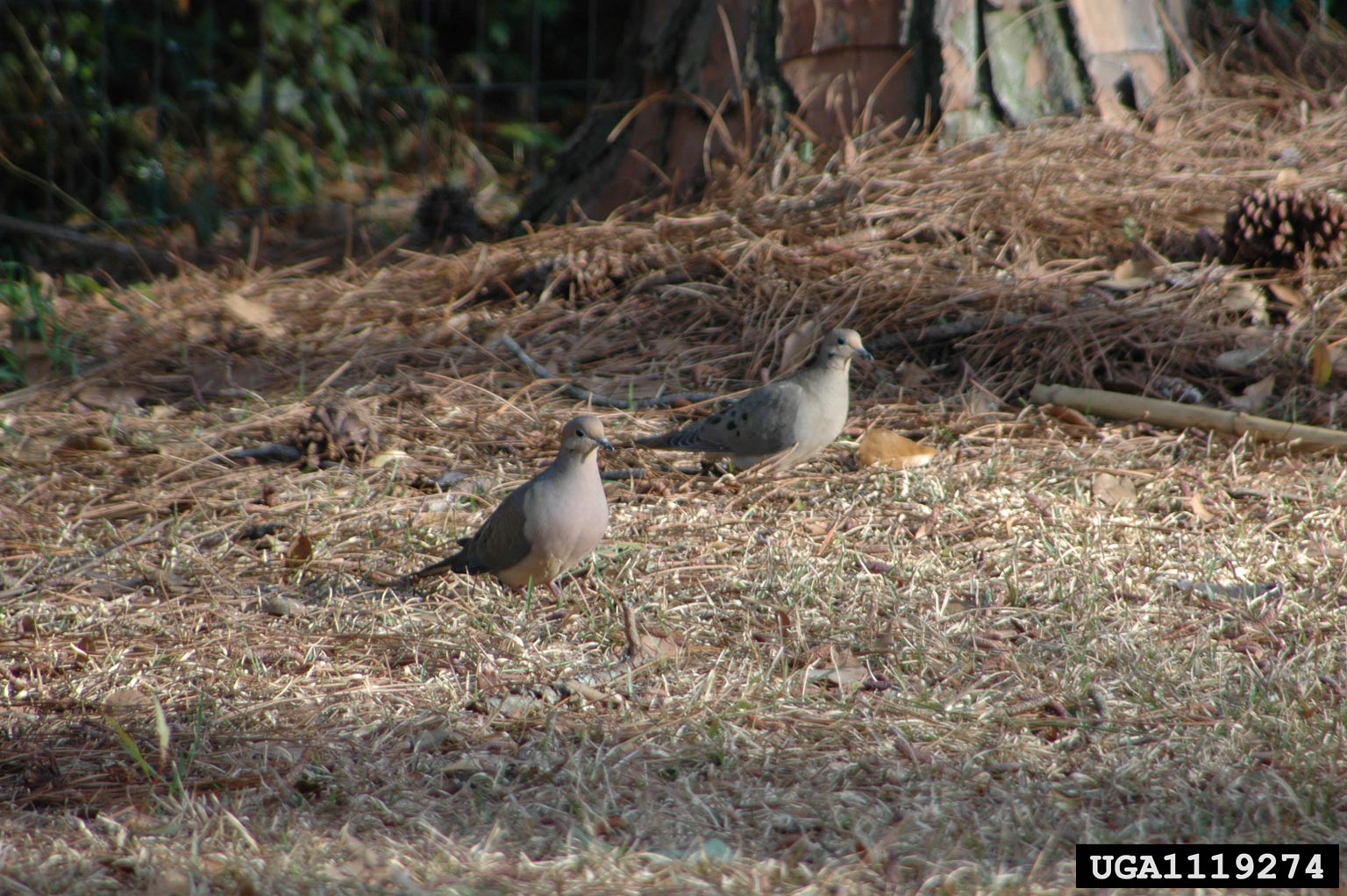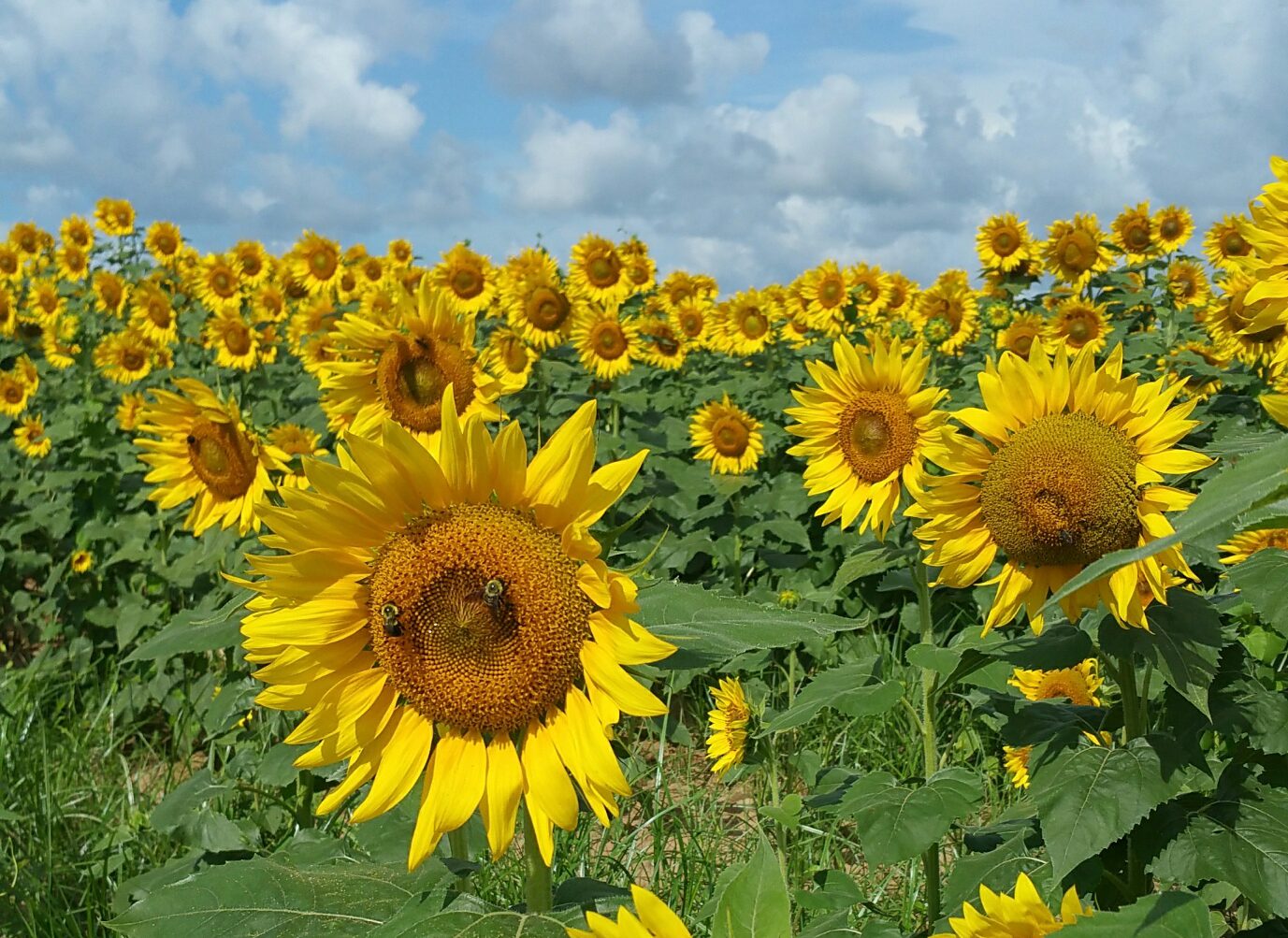
Planning Ahead for Dove Season
Every Fall, sportsmen of all ages set their sights on the mourning dove (Zenaida macroura), one of the most widely hunted migratory birds in the United States. Because it is migratory bird, management falls under federal and state regulations. Annually, Extension agents receive questions about the legality of putting out supplemental feed to attract dove. For farmers looking for an alternative revenue stream or landowners searching for ways to attract dove and other wildlife to their land, now is a good time to consider planting supplemental food crops. Baiting of birds is illegal, but planting of supplemental food crops is legal. Much of the information found in this article can be found in the University of Florida EDIS publication entitled “Dove Fields in Florida.” Please refer to this publication for more information.
When considering planting for dove, one should dedicate a minimum of five acres and do sequential plantings to ensure a longer availability of food sources. Incorporating multiple types of plant species will help keep the birds coming back and also extend the season. The list below, though not comprehensive, provides an overview of what is typically planted for dove. Particular attention should be paid to the recommended planting dates and seeding rates; this plays a major role in the discussion of supplemental food source versus baiting.
Browntop Millet—Panicum ramosum: Typical planting dates: June-September; maturation time: 60-70 days; seeding rate: 15-25 lbs/acre (15 lbs/acre drilled); planting depth: 1/2 inch; pH: 6.0; grows well with corn, sunflower, and millets.
Proso Millet—Panicum miliaceum: Typical planting dates: June-August; maturation time: 75-90 days; seeding rate: 10-30 lbs/acre (15 lbs/acre drilled); planting depth: 1/2 inch; pH: 6.0; does well on many soils; grows well with corn, sunflower, and other millets.
Japanese Millet—Echinochloa crusgalli: Typical planting dates: May-August; maturation time: 80-100 days; seeding rate: 10-20 lbs/acre (15 lbs/acre drilled); planting depth: <1/2 inch; pH: 6.0; does well on wet soils; grows well with other millets.
Sunflower—Helianthus annuus: Typical planting dates: May-July; maturation time: 90-120 days; seeding rate: 10-20 lbs/acre (5-10 lbs/acre drilled); planting depth: 1 inch; pH: 6.0-7.0; does best on well-drained soils; black variety best; grows well in alternating strips or rows of browntop millet and corn.
Corn—Zea mays: Typical planting dates: March-July; maturation time: 80-150 days; seeding rate: 8-15 lbs/acre (drilled); planting depth: 1-1 1/2 inches; pH: 6.0-7.0; does best on well-drained soils; should be planted in at least 4 rows for adequate pollination to occur; use tropical or late season varieties if planting in June-July; grows well with browntop millet and soybeans.
Sorghum—Sorghum spp.: Typical planting dates: March-June; maturation time: 75-150 days; seeding rate: 4-15 lbs/acre (5 lbs/acre drilled); planting depth: 1 inch; pH: 5.5-6.5; drought tolerant; avoid bird resistant varieties; grows well with many warm-season grasses.
Wheat—Triticum aestivum: Typical planting dates: September-November; maturation time: 180-260 days; seeding rate: 90-120 lbs/acre (drilled); planting depth: 1-2 inches; pH: 6.0; does best on well-drained soils; grows well with other grains.
Oats—Avena spp.: Typical planting dates: September-November; maturation time: 180-260 days; seeding rate: 96-128 lbs/acre (drilled) ; planting depth: 1-2 inches; pH: 6.0; does best on well-drained soils; grows well with other grains.
Buckwheat—Fagopyrum esculentum: Typical planting dates: March-August; maturation time: 40-50 days; seeding rate: 40-50 lbs/acre (drilled) ; planting depth: 1/2 inch; pH: 6.0; does best on well-drained soils, but will grow under a variety of conditions; grows well with many millets, sunflower, and sorghum.
Soybeans—Glycine max: Typical planting dates: March-July; maturation time: 180 days; seeding rate: 30-100 lbs/acre (60 lbs/acre drilled); planting depth: 1/2-1 inch; pH: 5.8-6.5; does best on well- and moderately well-drained soils; grows well with sorghum and corn.
Sesame—Sesame indicum: Typical planting dates: April-June; maturation time: 90 days; seeding rate: 5-12 lbs/acre (5 lbs/acre drilled); planting depth: 1 inch; pH: 6.0-7.0; does best on well-drained soils; grows well with other grains; can be an extremely high seed producer.
Like any crop, these seeds should be properly planted and managed. Whether you decide to plant on tilled ground or via overseeding, the ground should be leveled and packed before and after planting to ensure good seed-to-soil contact. Many of the species listed are small seeded, and planting too deep will result in poor germination. Different crops can be planted in alternating strips 24-30 feet wide. It is also suggested that strips should be left un-planted between the rows. These areas can then be sprayed with herbicide or disked so there is bare ground for the birds to forage.
For the most success, remember to ensure good soil fertility by testing and then amending with lime and/or nutrients as indicated in the results of the soil analysis. For more information on food plot soil analysis, please see the following Panhandle Agriculture article: Underperforming Food Plots? Three Possible Reasons Why.

Supplemental food source versus Baiting—The Law
The question of what a legal dove field is comes up year after year, and rightfully so. If in doubt, contact the Florida Fish and Wildlife Conservation Commission (FWC) with your questions; it is better to be safe than sorry.
The following information was taken directly from the FWC page: Dove Hunting and Baiting in Florida.
According to Title 50, Code of Federal Regulations, Chapter 1, Part 20.11, a baited area is, “any area on which salt, grain, or other feed has been placed, exposed, deposited, distributed, or scattered, if that salt, grain, or other feed could serve as a lure or attraction for migratory game birds to, on, or over areas where hunters are attempting to take them. Any such area will remain a baited area for 10 days following the complete removal of all such salt, grain, or other feed.”
Furthermore, according to Title 50, Code of Federal Regulations, Chapter 1, Part 20.21(i) doves may not be taken “by the aid of baiting, or on or over any baited area, where a person knows or reasonably should know that the area is or has been baited.” Title 50, Code of Federal Regulations, Chapter 1, Part 20.21 (i)(2) also specifically allows the harvesting of doves “on or over lands or areas that are not otherwise baited areas, and where grain or other feed has been distributed or scattered solely as the result of manipulation of an agricultural crop or other feed on the land where grown, or solely as the result of a normal agricultural operation.”
The United States Fish and Wildlife Service (USFWS) provides dove field managers some flexibility by inserting the word “manipulation.” According to Title 50, Code of Federal Regulations, Part 20.11, manipulation means, “the alteration of natural vegetation or agricultural crops by activities that include but are not limited to mowing, shredding, disking, rolling, chopping, trampling, flattening, burning, or herbicide treatments. The term manipulation does not include the distributing or scattering of grain, seed, or other feed after removal from or storage on the field where grown.”
There also is some confusion as to what a normal agricultural planting is, because practices vary from state to state. According to Title 50, Code of Federal Regulations, Chapter 1, Part 20.11 , “normal agricultural planting, harvesting, or post-harvest manipulation means a planting or harvesting undertaken for the purpose of producing and gathering a crop, or manipulation after such harvest and removal of grain, that is conducted in accordance with official recommendations of State Extension Specialists of the Cooperative State Research, Education, and Extension Service of the U.S. Department of Agriculture.” However, this does not mean that a field is illegal if it was not planted according to IFAS recommended seeding rates, planting dates, or planting methods. A person may plant as they choose, but they may not hunt doves over that field until a minimum of ten days after all seed has germinated or following complete removal of that seed.
So, what is legal in Florida?
In Florida, as long as the grain was grown in the field, and is there as a direct result of mowing, shredding, disking, silage chopping, burning, etc., it is perfectly legal. You can plant your field at whatever seed rate you wish, and time the maturation of your fields to coincide with established dove seasons. However, once the grain leaves the field (even if it is grown there) it can never be brought back in, or the field is considered a baited area for 10 days following the complete removal of all such salt, grain, or other feed.
So, what is illegal in Florida?
In Florida, the top-sowing of seed (without disking it in) is not considered a “normal agricultural planting.” So, you may not hunt over a top-sowed field until a minimum of ten days after all seed has germinated or following complete removal of that seed. You may hunt over a top-sowed field that is already germinating and is actively growing or matured and was manipulated to enhance the field to attract doves.
The take home message is to make sure when you do any planting, you have all seed planted and disked in, well prior to ten days before any hunt.
The FWC recommends that you avoid planting during the season or during the split. If you must plant during the season or split (because your field flooded or army worms totally destroyed your field), then you should make sure all seed is completely covered or sprouted a minimum of ten days prior to hunting.
Finally, the FWC recommends that if you are unsure of whether or not your field may be considered baited, you should call your regional office to have an FWC Wildlife Officer inspect the dove field prior to hunting. Remember, as a hunter, you are responsible for determining whether or not a field is baited.
 0
0
